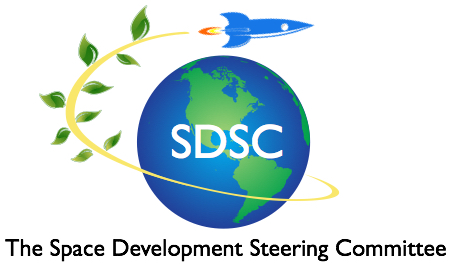The Space Development Steering Committee suggests a contest to get Americans to the moon, this time to stay.
The Committee urges NASA to ask private industry space companies to compete. With what? With private moon programs launched on private rockets. Programs whose first steps would allow these private companies to land Americans on the moon by 2024, the goal of the current presidential administration.
But the Space Development Steering Committee urges NASA not to require its contestants to use the NASA Gateway, a boondoggle that could keep us from setting foot on the moon for the next fifteen years.
To be more specific, NASA is bogged down with a rocket that may never fly, its Space Launch System. And it is about to put its foot in another bog, the Lunar Gateway. But NASA has run a successful private industry competition to get around quicksands like these before: the Commercial Orbital Transportation Services (COTS) competition.
The results of COTS have been spectacular. To date, the COTS competition has brought us a total of 24 successful International Space Station resupply missions at far less cost than if NASA had developed and operated these missions. COTS has brought us fifteen International Space Station supply missions on a newly-developed, reliable cargo craft called the SpaceX Dragon launched on the fabulously successful Falcon 9 rocket. And the COTS contest has brought us nine International Space Station supply missions on a Northrop Grumman Cygnus.
One of the candidates for a moon rocket took its first hop off the launch pad on April 4th—the SpaceX Starship, designed to carry 100 passengers to the Moon or Mars. Another moon program candidate, the SpaceX Falcon Heavy rocket, just made its second successful flight on May 11th and landed all three first stage boosters with the precision of a ballet.
The moon is coming within the grasp of visionaries who are not a part of a government space effort. SpaceIL, a small, Israeli non-profit, has just put a lander within six miles of the lunar surface. A Space Development Steering Committee member from NASA, speaking off the record, called Beresheet, “the little lander that could.”
The Israeli’s created, built, and launched this moon lander with a team of only 80. The Chinese lander currently on the far side of the moon took a team of 10,000. The Israeli lander’s success in getting so close to a touch down highlighted a simple fact. The moon is no longer the sole province of the superpowers and their massive space agencies.
The Trump administration insists on going to the moon by 2024. A worthy goal. Now it’s time for NASA, to harness the energy of the entrepreneurial space community. The best way to do it is the way we acquired our two new space cargo vehicles—the Dragon and the Cygnus. Lay out a prize of roughly $1 billion, and get private companies to compete. To compete with their own visions of a moon program. And to compete with some of their own money. Then provide the winners with a service contract to actually deliver NASA astronauts and cargo to the surface of the moon. Pay the winners the way you would pay a moving company.
Use those payments to energize space entrepreneurs intent on following their dreams and seeking their fortune on the High Frontier. Or in the craters of the moon.
